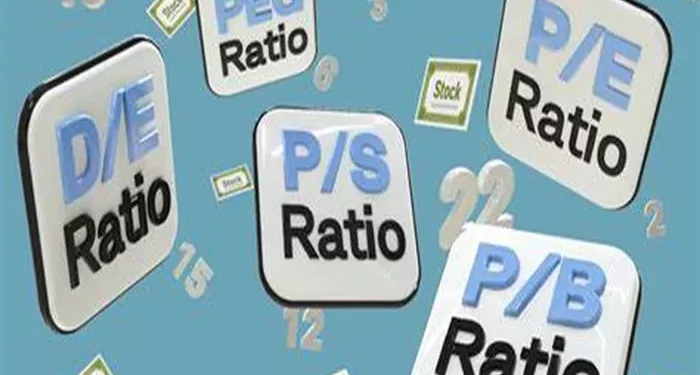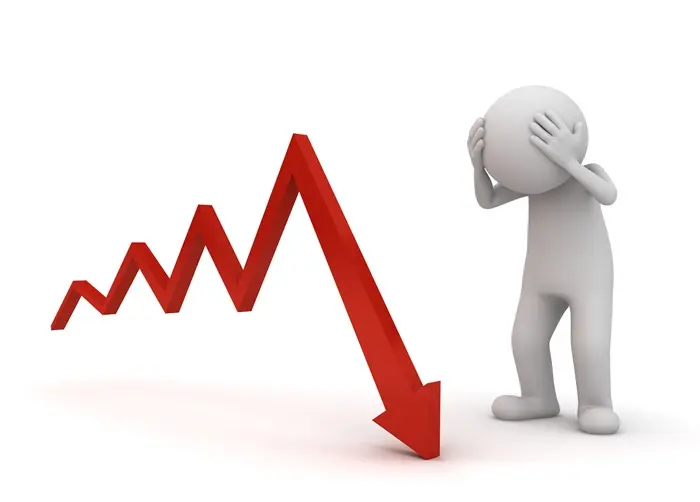In the world of stock analysis, investors are constantly on the lookout for tools and metrics that can help them make informed decisions about which stocks to buy, hold, or sell. One such important metric is the Price/Earnings to Growth (PEG) ratio. The PEG ratio combines elements of a company’s earnings and its expected growth rate to give investors a more comprehensive view of a stock’s value compared to just looking at the traditional Price/Earnings (P/E) ratio alone. But what exactly is a good PEG ratio for stocks? This is a question that many investors grapple with, as the answer can vary depending on several factors. In this article, we’ll explore in detail what the PEG ratio is, how it’s calculated, the factors that influence what might be considered a good PEG ratio, and how investors can use it effectively in their investment decision-making process.
Understanding the PEG Ratio
1. Definition and Calculation
The PEG ratio is a valuation metric that takes into account a company’s Price/Earnings (P/E) ratio and its expected earnings growth rate. It is calculated by dividing the P/E ratio by the expected earnings growth rate (usually expressed as a percentage). For example, if a company has a P/E ratio of 20 and an expected earnings growth rate of 10% per year, the PEG ratio would be calculated as 20 divided by 10, which equals 2. The idea behind this ratio is to provide a more balanced assessment of a stock’s value by factoring in how fast the company’s earnings are expected to grow. A lower PEG ratio generally suggests that a stock may be undervalued relative to its growth prospects, while a higher PEG ratio might indicate that the stock is overvalued or that the market has high expectations for its future growth.
2. Relationship with the P/E Ratio
The P/E ratio is a widely used measure that tells us how much investors are willing to pay for each dollar of a company’s earnings. However, it has a limitation in that it doesn’t consider the growth potential of the company. A company with a high P/E ratio might seem expensive, but if it has significant growth prospects, it could actually be a good investment. That’s where the PEG ratio comes in. By incorporating the growth rate, it gives a more nuanced view. For instance, two companies might have the same P/E ratio of 25. But if one company is expected to grow its earnings at 5% per year and the other at 15% per year, their PEG ratios would be different. The first company would have a PEG ratio of 5 (25 divided by 5), while the second would have a PEG ratio of around 1.67 (25 divided by 15). This shows that the second company might be a more attractive investment considering its growth potential, even though their P/E ratios are equal.
3. Importance of Expected Earnings Growth Rate
The expected earnings growth rate is a crucial component of the PEG ratio. It represents the market’s or an analyst’s projection of how much a company’s earnings will increase in the future. This growth rate can be estimated in various ways. Analysts might look at a company’s historical growth rates, its industry trends, new product pipelines, expansion plans, and other factors to come up with an estimate. For example, a technology company that is constantly innovating and launching new products might have a higher expected growth rate compared to a more mature company in a traditional industry like utilities. The accuracy of this growth estimate is important because it directly impacts the PEG ratio calculation and, consequently, our perception of whether a stock is a good value or not.
Factors Affecting What’s Considered a Good PEG Ratio
1. Industry Differences
Different industries have different characteristics when it comes to growth rates and typical PEG ratios. For example, in the technology sector, which is known for its rapid innovation and high growth potential, investors often expect companies to have higher growth rates. A PEG ratio of around 1 to 2 might be considered reasonable for many tech stocks, especially those with solid business models and a track record of consistent growth. In contrast, in the utility sector, where growth is usually slower due to the nature of the business (providing essential services with relatively stable demand), a PEG ratio of 3 or even higher might be acceptable because the overall growth expectations are lower. So, when evaluating a stock’s PEG ratio, it’s essential to compare it to the average or typical PEG ratios within its specific industry.
2. Company’s Growth Stage
The stage of a company’s growth also plays a role in determining what’s a good PEG ratio. A startup or early-stage company in a high-growth industry might have a very high expected growth rate as it tries to capture market share and expand rapidly. However, its earnings might still be relatively low or even negative in the early years, resulting in a high or undefined P/E ratio. In such cases, investors might focus more on the potential growth and be willing to accept a higher PEG ratio if they believe in the company’s long-term prospects. On the other hand, a mature company with stable earnings and slower growth might be expected to have a lower PEG ratio. For example, a well-established consumer goods company that has reached a saturation point in its domestic market and is only growing incrementally might have a PEG ratio closer to 1 or below if it’s fairly valued.
3. Market Conditions
The overall state of the market can influence what’s considered a good PEG ratio. In a bullish market environment, where investors are generally optimistic and willing to pay higher prices for stocks, PEG ratios might tend to be higher across the board. This is because there is more appetite for risk and greater expectations for future growth. During such times, a stock with a PEG ratio of 2.5 might still be seen as an attractive investment by many. In a bearish market, however, investors become more cautious and look for stocks with lower PEG ratios, perhaps closer to 1 or even below, as they seek more value and stability. Interest rates also play a part. When interest rates are low, investors may be more inclined to invest in stocks and might tolerate higher PEG ratios as the alternative fixed-income investments offer relatively lower returns.
4. Quality of Earnings and Management
The quality of a company’s earnings matters when assessing the PEG ratio. If a company has consistent and reliable earnings that are generated from its core operations, it gives more credibility to the growth projections and the resulting PEG ratio. For example, a company that has a history of accurately meeting or exceeding earnings forecasts and has strong cash flow is likely to have a more reliable PEG ratio. On the other hand, if a company’s earnings are volatile or boosted by one-time events like asset sales or accounting adjustments, the growth estimates and PEG ratio might be less trustworthy. Additionally, the quality of the company’s management is important. A competent management team that has a good track record of making sound business decisions, investing in growth opportunities, and effectively managing risks can enhance the attractiveness of a stock even if its PEG ratio is not extremely low.
Using the PEG Ratio in Investment Decision-Making
1. Comparing Stocks within an Industry
One of the main ways investors use the PEG ratio is to compare different stocks within the same industry. By looking at the PEG ratios of multiple companies in, say, the pharmaceutical industry, an investor can identify which ones might be relatively undervalued or overvalued in terms of their growth prospects. For example, if Company A has a PEG ratio of 1.2 and Company B in the same industry has a PEG ratio of 1.8, and all other factors are relatively equal, Company A might appear to be a better investment opportunity as it offers a potentially better combination of price and growth. This comparison helps investors narrow down their choices and focus on stocks that seem to offer better value within a particular sector.
2. Screening for Potential Investments
Investors can also use the PEG ratio as a screening tool when looking for new investment opportunities. They might set certain criteria, such as only considering stocks with PEG ratios below a specific value (like 1.5, depending on the industry and market conditions) to filter out stocks that might be overpriced. This initial screening can then be followed by further analysis of other aspects like the company’s financial health, competitive position, and management quality. For example, an investor using a stock screening software can input the PEG ratio requirement along with other parameters like minimum market capitalization and industry classification to come up with a list of potential stocks to research in more detail.
3. Identifying Growth at a Reasonable Price
The PEG ratio is particularly useful for identifying stocks that offer growth at a reasonable price. It helps investors avoid paying too much for a company’s growth potential. For instance, a stock with a high P/E ratio might seem expensive, but if its growth rate is also high and the resulting PEG ratio is within an acceptable range, it could still be a good investment. By focusing on the PEG ratio, investors can find companies that are expected to grow their earnings at a healthy pace while not being overly stretched in terms of their valuation. This is important because investing in overvalued stocks can lead to poor returns if the market corrects or the company fails to meet the high growth expectations priced into its shares.
4. Limitations and Caveats
While the PEG ratio is a valuable tool, it does have its limitations. One major limitation is the accuracy of the expected earnings growth rate. As mentioned earlier, this is an estimate, and different analysts might have different forecasts. A company’s actual growth could deviate significantly from what was expected, which would then make the PEG ratio less reliable. Additionally, the PEG ratio doesn’t take into account other important factors like a company’s debt level, dividend policy, or competitive landscape. For example, a company with a low PEG ratio might have a large amount of debt that poses a risk to its future operations, and this isn’t reflected in the ratio. So, investors should use the PEG ratio in conjunction with other financial metrics and qualitative analysis to make a more comprehensive assessment of a stock’s value.
Conclusion
Determining what is a good PEG ratio for stocks is not a straightforward task as it depends on multiple factors such as industry characteristics, the company’s growth stage, market conditions, and the quality of earnings and management. The PEG ratio provides a useful way to incorporate growth expectations into the valuation of a stock, helping investors make more informed decisions about whether a stock is undervalued or overvalued in relation to its growth potential. However, it’s important to be aware of its limitations and use it alongside other financial tools and qualitative analysis. By understanding the nuances of the PEG ratio and how it fits into the broader investment analysis process, investors can increase their chances of finding stocks that offer both growth and good value, ultimately leading to more successful investment outcomes.
Related topics:

































